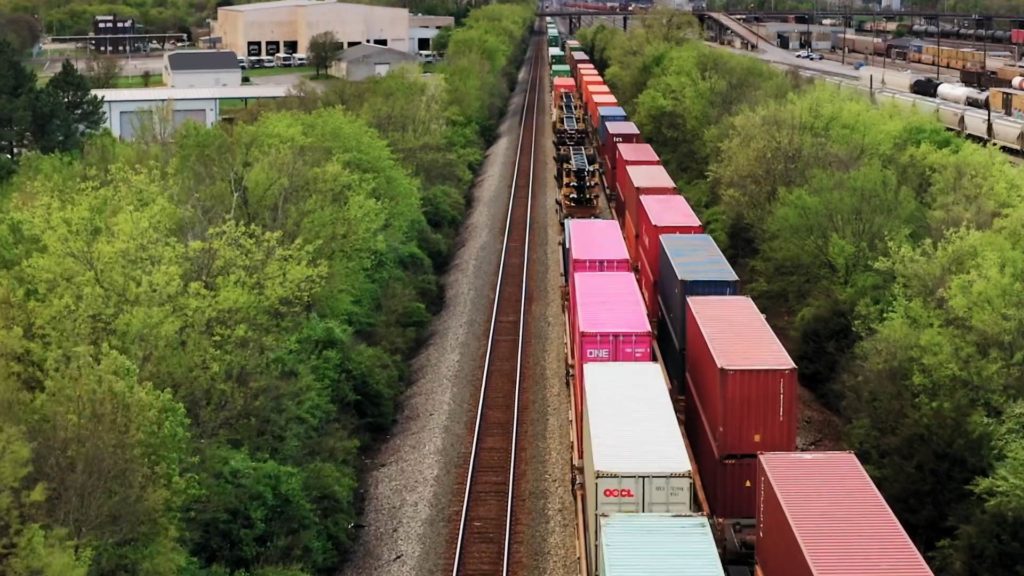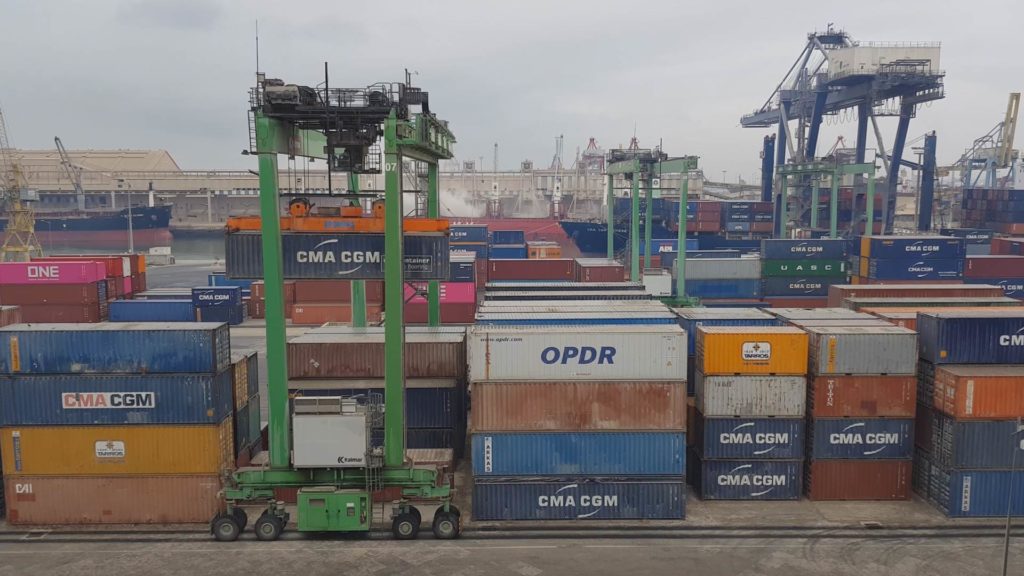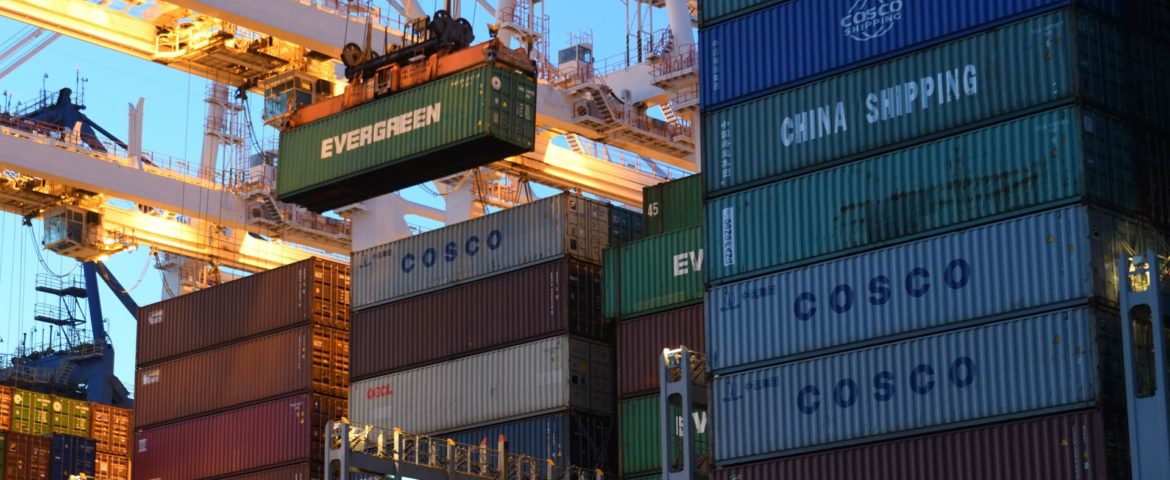What is container shipping?
Container shipping is a strategically important form of intermodal transportation that moves raw materials and finished goods from factories to distribution centers across the world. Often containers are moved thousands of miles on their journeys utilizing a combination of ship, train, and truck to physically move the containers.
Where are containers shipped?
In short, everywhere. Recent news articles showing the port congestion in Southern California highlight the immense amount of freight moving from China and South East Asia via ship to the US. Once these containers are moved from ship to land they are moved further inland via train or truck.
Container shipping also provides transportation for agriculture exports. In this scenario, empty containers are loaded in the US then shipped to Asia, South America, or Europe.
Many containers are also used to haul domestic long haul or cross country freight. Often via rail intermodal shipping, which utilizes trains for the long haul portion of the journey then trucks for the delivery to the rail yard and final delivery to receiver. Even companies like Home Depot, Walmart, and Amazon heavily rely on domestic intermodal freight, with some even owning their own containers.
How big are shipping containers and how much can they carry?
Shipping containers vary in size depending on the use case. For containers moving solely in North America, they are generally 53 ft long, which is the size of a standard semi-truck. Domestic container shipping is almost always dependent on railways for the long haul portion of the trip, then over the road drayage carriers for the first and last mile. This is known as domestic intermodal shipping, and is a cost-effective and energy-efficient alternative to traditional over-the-road tractor-trailers.
For international shipping 20ft and 40ft containers are used. Ships have for years been designed to hold 40ft and 20ft containers, thus utilizing the larger 53ft containers isn’t practical as much of the physical infrastructure that supports container shipping would have to be altered. TEU, which is a common unit of measurement for container freight volumes, is based on the number of 20ft containers or equivalents, so 1 40ft container would be counted as 2 TEU. There are many more 40ft and 20ft containers globally than 53 ft containers, with the majority of international ocean containers owned by the steamship lines ( ocean shipping companies). The majority of general goods are carried by 40ft containers, then heavier, denser freight is moved in 20 ft containers since the weight limit will be hit before a volume limit is reached.
Containers can structurally hold more weight than can be legally moved across US road systems on drayage trucks. Commonly 53 ft containers have a load capacity of 42,500 lbs, whereas 20ft and 40 ft containers can haul a maximum of around 45,000 lbs.
Other specialized containers include liquid and refrigerated systems.
How are containers moved?
Containers are commonly moved via truck to and from rail terminals and seaports, then by ship for ocean shipping and train for longer overland routes. Drayage trucks are nearly identical to traditional tractor trailers, however many drayage tractors do not have sleeper cabs due to the often short-haul nature of container trucking. The chassis they pull are typically owned by leasing firms or pools, and are specially designed to safely hold the containers during over the road transport, while also making it relatively easy for containers to be attached and de-attached from the locking mechanism.
The majority of international freight is moved via ship, and the vast majority of cargo ships are container ships. Over the years container ships have significantly grown in size, with many being 2,000-4,000 TEU years ago, to now mammoth ships of over 20,000 TEU capacity. These ships are operated by a variety of international ocean shipping firms on repeating routes. The ships have grown in size so much so that many port facilities and even the Panama Canal have had to invest hundreds of millions of dollars to facilitate the movement of these massive vessels by widening and deepening channels and berthing locations.

Railroads also play a major strategic part in moving both international and domestic containers. Steamship lines regularly work with railroads to route containers from seaports like Savannah or Long Beach to inland locations, like Chicago or Memphis. Once at the destination terminal, drayage carriers are used to move the loads to their final destination. Keeping the containers on a train reduces road congestion, greenhouse gas emissions and shipping costs for the parties involved. A great example is that one container train moving from Savannah to Atlanta, will keep hundreds of additional trucks off the roads.
What do they carry?
Containers carry all manner of cargo ranging from wood products, foods, toys, electronics, raw materials, Christmas lights and even cars.
Many times container freight is loaded and secured on pallets before being loaded into the container. This promotes the efficient movement of cargo into and out of the container via forklift at a loading dock, and allows easy strapping down of cargo to prevent movement and damage while in the voyage.
Supply chain managers develop polished transportation and logistics plans based on prior shipment data to maximize the efficiency of their needed container transport. This can involve mode diversification and transloading international container freight cargo into domestic 53 ft containers or dry vans for inland movement.
Why should I care?
If you are in the industry, this is obvious, but for others, the answer is simply that almost every single item within reach of you while reading this was moved via container freight. Even your clothing was likely transported via container from a foreign factory to a distribution center and eventually to the e-commerce fulfillment center or store that you bought them from.

The current shortages of some goods, and the general supply chain crisis that’s been covered in national media is heavily a result of container shipping backups and congestion. Unfortunately, there is no easy cure to these disruptions, it will likely take more than a year for global shipping providers and supply chains to rebalance the system following the massive disruptions due to the Covid-19 pandemic.
How to ship containers
Container shipping is typically done by businesses needing to move long-haul domestic full truckload freight or by importers/exporters needing to move goods overseas.
For international ocean freight, this involves working with a freight forwarder who can arrange passage of your freight from supplier to final destination.
For domestic container shipping, you can work with an intermodal provider like Zmodal. We regularly analyze shipment lanes and provide cost savings estimates to convert a portion of long haul volume to intermodal. Intermodal container shipping is often used for cross country shipping, and is typically 10-25% less costly than over the road trucking. In addition, intermodal is 50-75% more energy efficient, which means using intermodal makes your supply chain much greener.
Zmodal is a top intermodal shipping company, providing door-to-door intermodal, and full truckload services nationwide through our digital supply chain dashboard which provides easy route searching, booking, document management, and analytics. CONTACT US if you want to lower your supply chain costs or want access to North American intermodal capacity.



